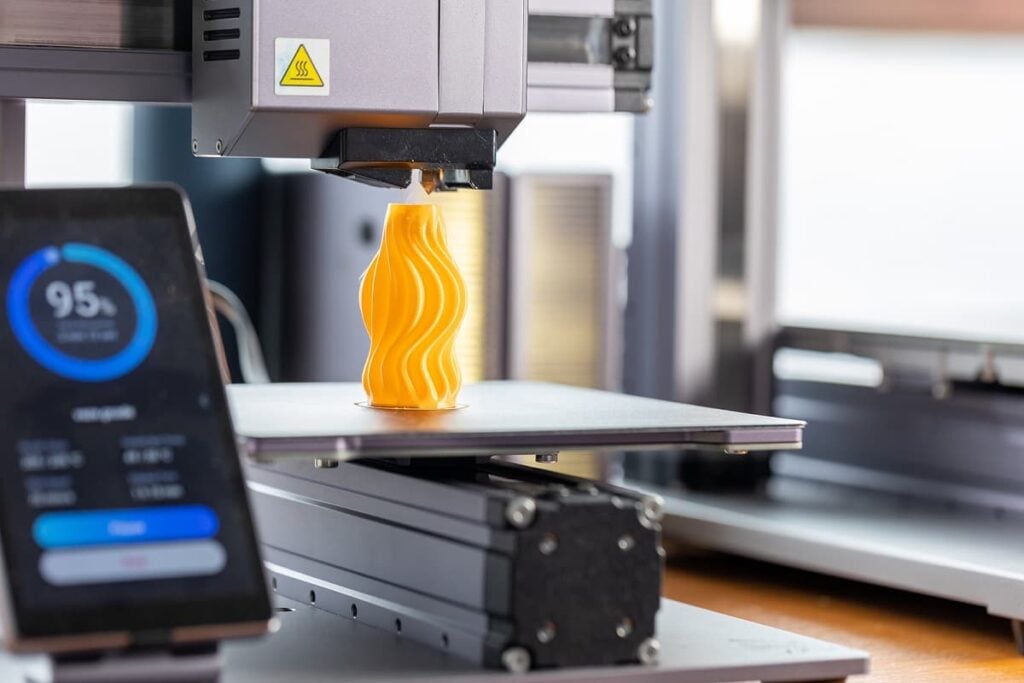Redwire Space Stock is Pure Play on Space Infrastructure
Table of contents

It’s part of human nature to want to put a label on something, even when we don’t quite know how to categorize it. One of the best examples out there is Gonzo the Great, the Muppet with an unhealthy fetish for chickens. People have been asking for decades: What the hell is Gonzo? Maybe a buzzard? He’s certainly his own animal. The same applies to Redwire Space (RDW), a NewSpace company cobbled together by an investment firm through a series of rapid-fire acquisitions since March 2020. Eighteen months later, it went public through a reverse merger with a special purpose acquisition company (SPAC). We briefly profiled this Frankenstein’s monster of a company last year before the deal was completed, promising to take a closer look after the space dust had settled.
About Redwire Space Stock
The Dr. Frankenstein in question is AE Industrial Partners, a private equity group “specializing in aerospace, defense and government services, space, power generation, and specialty industrial markets.” Originally founded as AeroEquity by a couple of guys named David and Brian Rowe, the firm rebranded in 2015 under its current moniker, with nearly $5 billion in assets under management across more than 90 deals over the last six years. It looks like David Rowe is still around as managing partner and head honcho, with tons of experience in the aerospace and defense industries. Presumably, that’s part of the interest behind the creation of Redwire Space, though there’s surprisingly very little independent media coverage about the company’s origin story.
A Brief History of Redwire Space Acquisitions
What we do know is that Redwire popped into existence in June 2020 after AE Industrial Partners announced it would combine its recent acquisitions of Adcole Space (March 2020) and Deep Space Systems (June 2020) into a new company “focused on designing and developing mission critical systems and high reliability electronics in support of the next generation space architecture.” (Try putting that on a business card.) The former has been around for more than 50 years, developing navigational components for spacecraft, including a sun angle sensor that’s key to orienting spacecraft-like satellites. The latter is a space-systems engineering company that “supports the design, development, integration, testing and operations of science and exploration spacecraft.”

Redwire (aka, AE Industrial Partners) proceeded to bolt on a half-dozen more companies in less than two years:
- Made in Space, June 2020. Among the first space startups to kick off the NewSpace industry, Made in Space has pioneered 3D in-space manufacturing.
- Roccor, October 2020. Develops aerospace structures such as solar arrays and other stuff that does stuff in outer space, such as a proof-of-concept solar sail that reflects sunlight to propel a spacecraft.
- LoadPath, December 2022. Another company that develops a bunch of space stuff, but was also acquired for its cozy relationship with the U.S. Air Force thanks to the company’s work at a key research lab at Kirkland Air Force base.
- Oakman Aerospace, January 2021. This company developed a software system called ACORN that enables digital engineering of just about anything you want to send into space, from single components to satellites to full constellations.
- Deployable Space Systems, February 2021. This is another company that builds structures for spacecraft, including the International Space Station (ISS). Its biggest claim to fame is the development of the Roll-Out Solar Array (ROSA), a key piece of tech for the next power upgrade at the ISS.
- Techshot, November 2021. Another on-orbit space manufacturing company, with specialities in biotechnology R&D in microgravity and bioprinting.
Aside from Redwire, AE Industrial Partners has invested in a number of other NewSpace companies, including Firefly Aerospace, which has had a rocky financial history, along with Terran Orbital and Sierra Space, a company that works on cool stuff like space planes and space stations.
From SPAC to Redwire Space Stock
And, somehow in the midst of that buying spree, Redwire managed to broker a deal to go public through a reverse merger with a SPAC that it first announced in March 2021. The deal was supposed to gross $170 million for Redwire, including about $100 million in additional private equity. At the end of the day (Sept 2, to be specific), Redwire walked away with about $110 million, so looks like investors mostly redeemed their money before the merger completed. In addition, a whopping $35.9 million went toward merger costs. Easy come, easy go?

The company claimed a market cap of $615 million when the deal closed. Today, it’s trading at a little more than half that. The stock took a pretty good hit when Redwire announced its final numbers for 2021. On the surface, revenues sounded pretty good, increasing 237%, from $40.8 million in 2020 to $137.6 million last year. The company even provided this perspective: If all of its disparate parts had been officially combined at the start of 2021, it would have hauled in nearly $150 million. However you slice it, the numbers still fall well short of the $163 million projected in the shiny SPAC investor deck. In addition, the company’s revenue guidance for 2022 is between $165 million and $195 million. Again, short of the $237 million expected this year.
Should You Buy Redwire Space Stock?
It’s very apparent by now that almost every deSPAC stock on the market today was overvalued after the merger. While we want to hold these companies responsible for their promises, the market is starting to correct and maybe there could be a few diamonds in the rough awaiting to be mined. Redwire Space is certainly bringing in significant revenue. In comparison, one of our former faves in NewSpace, Rocket Lab (RKLB), reported just $62.2 million in revenue last year.
Here’s how the two compare based on the low end of their 2022 guidance (annualized from Q1-2022 projections for Rocket Lab) and current market caps using our simple valuation ratio (market cap/annualized revenues)
- Rocket Lab ($3.583B/$168M) – 21
- Redwire Space ($395M/$164M) – 2.4
Anything 40 or higher is too richly valued, so Rocket Lab is finally coming back to Earth. Meanwhile, Redwire Space is looking like a fire sale based on the ratio. (More on this in a bit.) There is a sense of synergy in the acquisitions Redwire has made over the last two years. The result is a new space infrastructure company with a bunch of legacy connections and customers. It kind of makes sense in a not-too-crazy way. After all, you can only have so many small satellite launch companies. Space infrastructure and manufacturing may not be as sexy, but they pay the bills.
Well, not entirely. Redwire doesn’t have much in the bank after blowing its SPAC. It started the year with about $20.5 million in cash, along with $25 million in revolving credit and around $75 million in long-term debt. The company claims it can last on that for the next 12 months, but that runway might be extended as the company just announced it entered into a common stock purchase agreement with B. Riley Principal Capital, where it can sell and issue up to $80 million of its common stock over a 24-month period. Finding buyers for that stock might be difficult pending the results of a class-action lawsuit filed against the company claiming its executive “made materially false and/or misleading statements, as well as failed to disclose material adverse facts about the Company’s business, operations, and prospects.”
The D&O Diary covered this news with some added commentary, noting that this was the 29th SPAC-related lawsuit filed in 2021. Disgruntled shareholders filing class-action lawsuits is nothing new, but the legal documents raised concerns around “potential accounting issues at a business subunit” which is intuitively concerning. Rapidly acquiring half a dozen companies means it takes time to figure out where all the bodies are buried. Hopefully, Redwire puts a temporary hold on acquiring new companies to understand fully what they’ve inherited, and handles this legal distraction quickly and effectively.
We’re also not happy with how much Redwire relies on government money for its bread and space booms:

Generally, there’s too much regulatory risk with government customers, and we don’t see the revenue mix for Redwire changing that dramatically any time in the near future. And, of course, we don’t invest in companies with a market cap of less than $1 billion. Until Redwire can gain the confidence of investors by successfully integrating its complementary (but still disjointed) parts, it will likely remain at basement prices for the foreseeable future.
Conclusion
Investing in space stocks has been more frustrating than trying to clear a spaceship of tribbles. Legacy companies like Maxar Technologies and Iridium don’t offer typical tech growth stories, but the SPAC-ization of NewSpace stocks has made us leery of even nibbling at space stocks, except one – and even that one has raised some doubts. Another space company that we do like is similar to Redwire in that it is also diversified, though even more broadly so across sectors such as geospatial intelligence and satellites. While space may become a trillion-dollar industry someday, the risk remains relatively too high for us.
Sign up to our newsletter to get more of our great research delivered straight to your inbox!
Nanalyze Weekly includes useful insights written by our team of underpaid MBAs, research on new disruptive technology stocks flying under the radar, and summaries of our recent research. Always 100% free.
















The D&O piece linked in this article is from December 2021. Since then, Redwire finished its internal accounting investigation (an investigation the company initiated and self-reported) and found no issue. Not sure why the authors didn’t read the more recent company filings. The outstanding lawsuits seem to me to be the standard ambulance chaser lawsuits that pop up around any material event a public company encounters.
The thesis stated early on in the article is most interesting—that amidst the carnage and wreckage of the deSPAC battlefield there may be some genuinely interesting opportunities to find promising companies that have been thrown out with the rest. Redwire is intriguing as potentially a more diversified space business compared to companies singularly focused on a certain product area. However, hard to know when its collection of individual businesses leads to a defensible moat, or whether it will always be competing with the latest start-ups focused on single products.
I’m less worried about the govt contract concentration at this point, since so much of the space market is govt. contracts. The key thing I would watch is how much the rev mix shifts in line with the longer-term emergence of a private space industry. Will be a long-term factor to monitor. In the short-term, high govt mix means that they’re providing value where the current action is. Just my two cents.
Yes, we know they finished their internal investigation. We also are aware there are lots of SPAC lawsuits happening, and that the D&O piece is four months old. That doesn’t change our conclusion. We’re waiting for the dust to settle before we take another look again. You are correct that this thing needs some time to settle before we can tell what’s actually been pasted together. Thank you for taking the time to comment!
Totally agree with “S I” comments
The three main bear reasons that the authors mention in the article are not so worrying:
1) Investigation for the accounting issue – Now resolved and no issues were found
2) Low cash on hand – Not really a concern with the 80M$ dollar stock agreement plus the huge revenues each year that Redwire has.
If they expect to do almost 195M$ in revenues this year and with 30% margin. I’m pretty sure they can pay their long term debts
3) Government being 2/3 of the revenues – Well like it was previously mentioned, Government money is still the highest share of the cake in the Space industry.
And the tendency is to increase overtime, especially in National Security and with the Artemis program from NASA.
Space race against China and Russia ia heating up
So overall I think Redwire at the moment has a good entry price point (6$ per share). Waiting for 1B$ market would be losing a 2.5x opportunity
We don’t invest in companies with a market cap of less than a billion dollars. Period. No exceptions. You didn’t note that one of the reasons this needs to be given some time is for all the dust to settle following their acquisitions. The company needs to fully understand what they acquired and several 10-Q filings will let us see what surfaces. We don’t YOLO FOMO into stocks, especially extremely risky space stocks. There is absolutely no rush to invest in this firm. The arbitrary price of $6 a share means nothing. The stock could fall further, it could rise, anything could happen, but – as risk-averse investors – we’re not interested in investing in this firm right now. You may have a different tolerance for risk and that’s fine. Thank you for taking the time to comment.